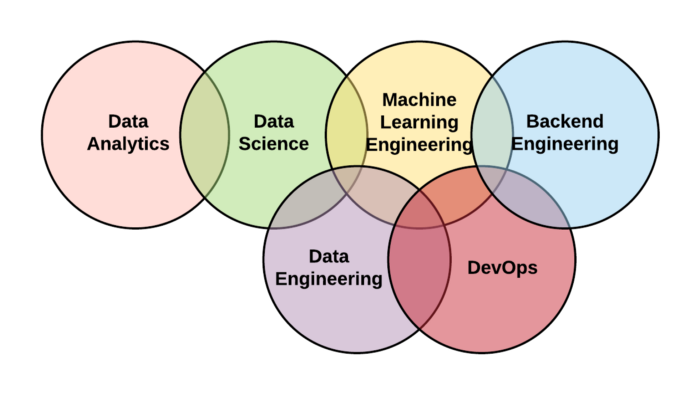
Data Science, Machine Learning, and Data Analytics are closely related fields within the broader domain of data-driven decision-making. However, they have distinct focuses and methodologies. Let’s explore each one:
1. Data Science:
Data Science is an interdisciplinary field that combines elements of mathematics, statistics, computer science, domain knowledge, and data expertise to extract knowledge and insights from data. The primary goal of data science is to solve complex problems and make data-driven decisions. Data scientists are responsible for collecting, cleaning, analyzing, and interpreting data to identify patterns, trends, and correlations.
Data science involves various techniques, including data visualization, statistical analysis, machine learning, and deep learning. It is often used to solve business problems, optimize processes, create predictive models, and enable better decision-making.
2. Machine Learning:
Machine Learning is a subset of artificial intelligence (AI) that focuses on creating algorithms and models that can learn patterns from data and make predictions or decisions without being explicitly programmed. The core idea behind machine learning is to enable computers to learn from data and improve their performance over time.
There are three main types of machine learning:
- Supervised Learning: The algorithm is trained on labeled data, meaning the input data is paired with the correct output. The goal is to learn a mapping from inputs to outputs to make predictions on new, unseen data.
- Unsupervised Learning: The algorithm is given unlabeled data and must find patterns or groupings on its own without explicit guidance.
- Reinforcement Learning: The algorithm learns by interacting with an environment and receiving feedback in the form of rewards or penalties to make better decisions.
Machine learning is widely used in various applications, including image recognition, natural language processing, recommendation systems, fraud detection, and more.
3. Data Analytics:
Data Analytics focuses on examining datasets to conclusions, identifying patterns, and making informed decisions. It involves using various statistical and analytical techniques to gain insights from data. Data analytics is often retrospective, meaning it looks at historical data to understand what has happened and why.
Data analytics can be broadly categorized into two types:
- Descriptive Analytics: Describes what has happened in the past based on historical data. It includes methods like data aggregation, data mining, and basic statistical analysis.
- Predictive Analytics: Uses historical data and machine learning algorithms to predict future outcomes or trends.
Data analytics is extensively used in business intelligence, marketing analysis, financial forecasting, and other domains where historical data can provide valuable insights for decision-making.
In summary, Data Science is a broader field that encompasses Machine Learning and Data Analytics. Data Science uses various techniques, including Machine Learning, to gain insights from data, while Data Analytics mainly focuses on descriptive and predictive analysis of historical data. Machine Learning, on the other hand, is a specific subset of AI that deals with creating models capable of learning from data to make predictions or decisions.
